 |
RADIOMARELLI RD
302 Italy - 1960 |
 |
 Description
Description Restoration
Restoration |
Descrizione
Restauro |
||
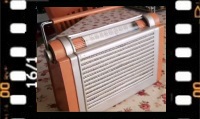 |
|||
|
La RD 320 era un ricevitore portatile a transistor per la gamma delle Onde Medie, frutto della collaborazione tra la Radiomarelli e la RCA Victor U.S.A., dalla quale la ditta italiana aveva acquisito il brevetto per produrre in Italia la stessa radio che la RCA Victor vendeva negli Stati Uniti come modello "All Transistor Globe Trotter 1-T-5". Tutti i componenti impiegati nella RD 320, e non solo i transistor al germanio, ma anche il circuito stampato, il condensatore variabile, le bobine, i trasformatori di MF e quello audio e i condensatori elettrolitici provenivano dagli U.S.A. Il mobiletto in plastica/alluminio invece era di produzione italiana come risulta dal marchio CONCESIO ALBA (BRESCIA) stampato all'interno del mobile e dalle diciture "8 Transistor RADIOMARELLI", VOL e SINT xerigrafate sul pannello di chiusura e sulla scala parlante di alluminio. ll circuito della RD 320 era una supereterodina che utilizzava otto transistor RCA al germanio: 2N544, 2N412, 2N410, 2N410, 2N408, 2N408, 2N408, 2N408 e un diodo 1N60. L'antenna era avvolta su un lungo nucleo di ferrite e la Media Frequenza risuonava a 455 kHz. Lo stadio audio utilizzava quattro transistor uguali (2N408) e l'altoparlante magnetodinamico ellittico (15 x 10 cm) era un modello insolito con un avvolgimento mobile da 130 Ohm che prevedeva una presa centrale in maniera da risparmiare il trasformatore d'uscita per il push-pull (due 2N408 selezionati). L'alimentazione della radio era fornita da quattro batterie da 1,5V tipo C (R14/14D) per un totale di 6V. La radio si accendeva sollevando il pannello rotante di alluminio che copriva la scala parlante. La manopola della sintonia era a destra mentre a sinistra c'era il controllo del volume. In alto a destra nel pannello posteriore c'era una presa jack da 3,5 mm per l'auricolare. Le dimensioni erano: 25 x 16 x 7 cm, mentre il peso era di 1.5 kg / 3 lb 4.9 oz senza batterie. © IK3HIA, 2024. |
|||
|
|
|||
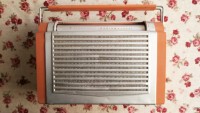 |
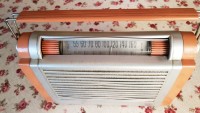 |
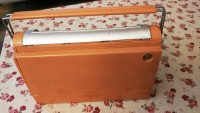 |
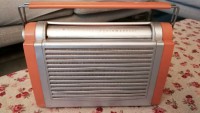 |
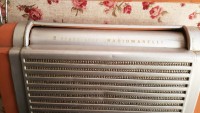 |
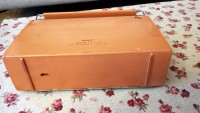 |
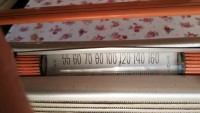 |
|
 Radiomarelli RD 320 - Magneti Marelli (Radiomarelli)
- Sesto San Giovanni (MI), Italy, 1960.
Radiomarelli RD 320 - Magneti Marelli (Radiomarelli)
- Sesto San Giovanni (MI), Italy, 1960.The RD 320 was a portable transistor receiver for the Medium Wave range, the result of a collaboration between Radiomarelli and RCA, from which the Italian company had acquired the patent to produce in Italy the same radio that RCA Victor sold in the U.S.A. as the "All Transistor Globe Trotter 1-T-5" model. All the components used in the RD 320, and not only the germanium transistors, but also the printed circuit board, the variable capacitor, the coils, the IF and audio transformers and the electrolytic capacitors came from the U.S.A.. The plastic/aluminum cabinet was made in Italy, as can be seen from the mark CONCESIO ALBA (BRESCIA) printed inside the cabinet and the words "8 Transistor RADIOMARELLI", VOL and SINT xerigraphed on the closing panel and on the aluminum dial. The RD 320 circuit was a superheterodyne that used eight RCA germanium transistors: 2N544, 2N412, 2N410, 2N410, 2N408, 2N408, 2N408, 2N408 and a 1N60 diode. The antenna was wound on a long ferrite core and the IF resonated at 455 kHz. The audio stage used four identical transistors (2N408) and the elliptical magnetodynamic speaker (5.9 x 3.9 in) was a unusual model with a 130 Ohm moving coil that included a central tap in order to save the output transformer usage for the push-pull (two selected 2N408). The radio was powered by four 1.5V type C batteries (R14/14D) for a total of 6V. The radio was turned on by lifting the rotating aluminum panel that covered the dial. The tuning knob was on the right while on the left there was the volume control. At the top right of the rear panel was a 3.5mm jack socket for headphones. The dimensions were: 9.84 x 6.29 x 2.7 in, while the weight was 3 lb 4.9 oz without batteries. © IK3HIA, 2024. |
|||
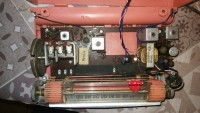 |
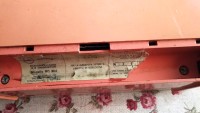
|
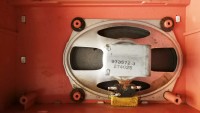 |
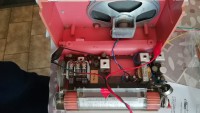 |
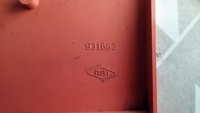 |
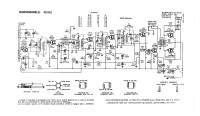 |
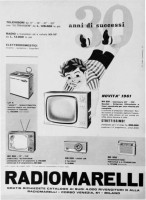 |
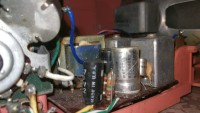 |
|
Return to top of page
|
|||
|
|
Return to: IK3HIA home page |
|
Return to: Transistor Radio |
|
Go to: Transistor diagrams |